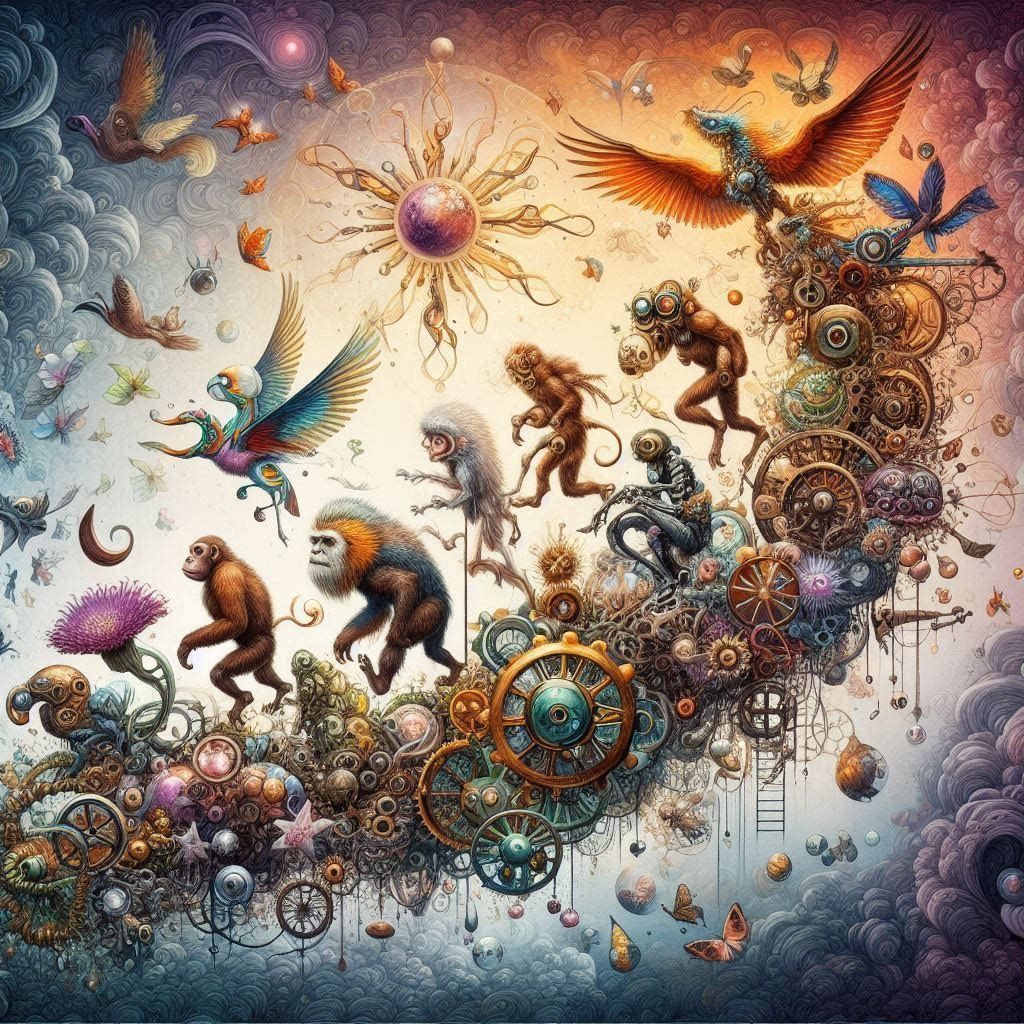Chapter 4 / Evolution II: The Dead End That Had to be Taken into Our Own Pseudopodia

Be fruitful and multiply
— Genesis 1:28 KJV
About seven billion years ago, something extraordinary happened on the sixth planet from the primary of the binary star, HD 176051. Though no one knows how it happened, RNA and its sister molecule, DNA, those 4-bit codes that bind all life together and distinguish it from one another, came into existence on — let’s call it, “P6” — in the prebiotic slush of chemical evolution. The formation of these information storage systems arranged into single strands and double helices allowed for the codes that informed the growth of all life and form on P6.
That generated a shit-ton of code. Et cetera.
The bacteria formed. Then nothing for a billion years. Then Protista, slime — you know the drill. One prokaryote engulfed another prokaryote that made itself at home inside and contributed functions besides being digested as food. Eukaryotes were on their way. Slime molds arrived to victimize the plentiful bacteria around thermal vents and all over the world-spanning ocean, and on the sparse land. Slime ruled the seas.
In the watery, floaty environment of P6, this happened a lot and each slime- blob contained combinations of genetic material with permutations that numbered in the trillions. Just right to be epigenetically turned on by arrays of changing environments. Nearly every habitat, from deep trenches to shallow seas, from radioactive outcroppings to thermal vents, from chilly polar regions to ones heated not quite to boiling when the binaries were at perihelion, was populated by the versatile blobs.
An eyeblink in the foregoing history, it crept and flowed — and whatever other forms of locomotion that the pseudoplasmodia developed — to the top of the heap on this world to claim its dominion, and to be fruitful, and to multiply.
Vertebrates never had a chance on P6. They never even got a toehold. A pseudopod was there first.